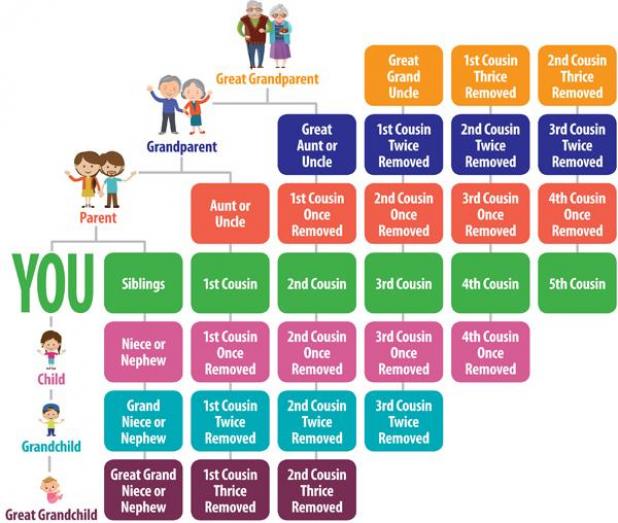
Your mom’s uncle’s grandparent’s cousin’s daughter — yep, there’s a name for that
It’s that time of year when you’re gathering with family members who you haven’t seen for who knows how long! Even if you’re more concerned with the snack bar, the televised football game or the mound of white elephant gifts under the tree, there’s a good chance you’re still going to have to make some small talk at some point.
You’re lucky if you remember everyone’s names, let alone how you’re related to all of them. You can probably remember who your aunts, uncles and grandparents are, and hopefully your first cousins, but beyond that, you just refer to everyone as “cousin” and call it good.
That’s why we’re offering you this handy relationship chart. Feel free to cut it out and slip it in your pocket before heading to Grandma’s house. It will hopefully clear up some confusion or even some arguments. (We cannot guarantee that you won’t still be confused about what ingredients are in your aunt’s Jell-O salad or why your uncle really needs that much cologne.)
How to use the chart
The relationship chart is easier than you think if you just take a few minutes to study it and commit it to memory.
First, remember that the chart is all about YOU. All of the relationship labels are referencing what YOU would call YOUR relatives.
Second, remember that each row is a separate generation. That doesn’t necessarily mean they are close in age — they are just the same distance away from their mutual relative. If a cousin is “once removed,” that means they are one generation either above or below you on the chart. “Twice removed” would be two generations apart, and so on.
The full article is available in our e-Edition. Click here to subscribe.
Think you’ve mastered the cousin chart?
Take our online quiz at surveymonkey.com/r/DKYTXF3
